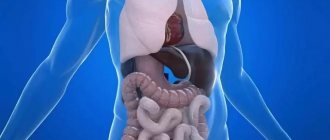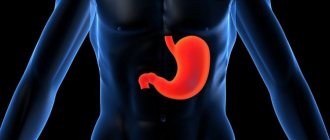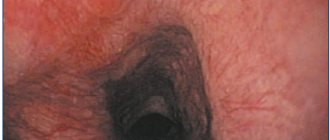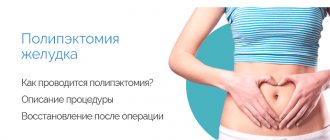In recent years, doctors at the Yusupov Hospital have been paying great attention to minimally invasive surgery for esophageal cancer. This is due to the fact that most patients admitted to oncology facilities suffer from advanced dysphagia (impaired swallowing). More than 70% of patients admitted to the oncology clinic for esophageal cancer are not subject to surgical treatment. Often oncologists are not able to perform radical surgery due to the prevalence of the tumor process - extensive lymphogenous and hematogenous metastasis and concomitant diseases. Surgeons form nutritional gastrostomies or jejunostomies for patients with esophageal cancer, which significantly undermines the social status of people and creates physical and psychological discomfort.
Esophageal stenting for esophageal cancer can improve the patient’s quality of life and increase its duration. The Yusupov Hospital has created all the conditions for the treatment of patients with esophageal cancer:
- comfortable rooms;
- modern diagnostic equipment from leading companies in the world;
- qualified personnel who know the characteristics of patients with malignant neoplasms;
- innovative treatment methods, including esophageal replacement.
This has improved the results of treatment of patients with esophageal cancer. Patients who undergo esophageal stenting for esophageal cancer have increased life expectancy.
About esophageal stents
Your esophagus is the tube that carries food and liquids, including saliva, from your mouth to your stomach when you swallow. Esophageal cancer can make swallowing difficult. This disorder is called dysphagia.
To make swallowing easier, your doctor has recommended that you have an esophageal stent installed. It is a hollow tube that is placed in your esophagus at the site of the tumor to keep the area open.
Esophageal stents are inserted through the mouth. This does not require surgery. In most cases, patients return home on the day of the procedure. Installing a stent will not affect the cancer treatment process.
to come back to the beginning
What is stenting for stenosing cancer of the esophagus and stomach?
Stenotic cancer of the esophagus and stomach are types of tumors in which cancerous tissue develops inside the walls of the organs. Their growth causes a gradual narrowing of the lumen in the digestive tract, which, in turn, makes normal food intake impossible. The stenting procedure for these types of oncology is an effective way to restore the patency of tubular organs using a stent - a special metal or plastic tube with a length of 7 to 16 cm. It is inserted into the organ using an endoscope, opens on its own, takes the necessary shape in the stomach or esophagus, compressed ingrowth/proliferation of tumor tissue. The procedure is used as an element of palliative, i.e., supportive treatment of oncology in late stages. Its main task is to make a person’s life easier and longer, to allow him to eat, drink, and receive medications in the traditional way. In addition to treating malignant neoplasms of the stomach and esophagus in an inoperable form, stenting is used for throat cancer, tumors of the larynx, lungs, trachea, fistulas, thermal and chemical burns. The only contraindications to it are metastases and tumor growth into the upper esophageal sphincter.
What is a stent?
The first prostheses of this kind began to be produced in the middle of the last century. They were made of silver, wood, and plastic and showed low effectiveness due to frequent displacements and a large number of side effects. Today they are made of titanium, nickel and stainless alloys, covered inside and outside with a biological inert film made of silicone, polyester, polyurethane and other modern materials. The main advantages of implants of this kind: radiopacity, the ability to observe the processes occurring inside the stent, replace or remove the structure.
One week before the procedure
Ask questions about your medications
You may need to stop taking certain medications before the procedure. Talk to your doctor about which medications you can stop taking. Below are some common examples.
Anticoagulants (blood thinners)
If you are taking blood thinners (which affect blood clotting), ask your doctor about the best course of action. Doctor contact information is listed at the end of this material. Whether your doctor recommends stopping this medication depends on the reason you are taking it.
Do not stop taking blood thinners without talking to your doctor.
| Examples of blood thinning medications: | |||
| apixaban (Eliquis®); | dalteparin (Fragmin®); | meloxicam (Mobic®); | ticagrelor (Brilinta®); |
| aspirin; | dipyridamole (Persantine®); | nonsteroidal anti-inflammatory drugs (NSAIDs), such as ibuprofen (Advil®) or naproxen (Aleve®); | tinzaparin (Innohep®); |
| celecoxib (Celebrex®); | edoxaban (Savaysa®); | pentoxifylline (Trental®); | warfarin (Coumadin®); |
| cilostazol (Pletal®); | enoxaparin (Lovenox®); | prasugrel (Effient®); | |
| clopidogrel (Plavix®); | Fondaparinux (Arixtra®); | rivaroxaban (Xarelto®); | |
| dabigatran (Pradaxa®); | heparin (subcutaneous administration); | sulfasalazine (Azulfidine®, Sulfazine®). | |
Read the resource Common Medicines Containing Aspirin and Other Nonsteroidal Anti-Inflammatory Drugs (NSAIDs) or Vitamin E. It contains important information about the medications you should not take before your procedure and what medications you can substitute for them.
Medicines for diabetes
If you take insulin or other medications for diabetes, ask the doctor who prescribed the medication what you should do the morning of your procedure. You may need to change your dose before the procedure.
If you are taking metformin (such as Glucophage® or Glumetza®) or a medicine that contains metformin (such as Janumet®), do not take it one day before or on the day of your procedure.
If necessary, obtain a certificate from your doctor
- If you have an automated implantable cardioverter defibrillator (AICD), you will need to get a clearance letter from your cardiologist (heart doctor) before having the procedure.
- If you have had chest pain, new or worsening difficulty breathing, or fainting in the last 6 weeks, you will need to get a clearance letter from your doctor before having the procedure.
- We must receive a certificate of admission to the procedure no later than 1 day before the procedure.
Arrange for someone to take you home
You must have a responsible companion to take you home after the procedure. A responsible companion is someone who will help you get home safely. This person should be able to contact your healthcare team if there are any concerns. Agree on this in advance, before the day of the procedure.
If you are unable to find a responsible escort to take you home, call one of the agencies below. You will be provided with an escort who will take you home. There is often a fee for these services and you will need to provide transportation. You can take a taxi or rent a car, but in this case you will still need to have a responsible escort with you.
| Agencies in New York | Agencies in New Jersey |
| Partners in Care: 888-735-8913 | Caring People: 877-227-4649 |
| Caring People: 877-227-4649 |
Return to top Return to top
Stenting of the tracheobronchial tree
Stenting of the tracheobronchial tree is a minimally invasive method of restoring the patency of the trachea and main bronchi, providing air access to the lung tissue by installing a stent at the level of the narrowing. The intervention is carried out under double control: endoscopic and radiological. [10]
Stenting is one of the ways to help patients with tumor and benign strictures of the trachea and bronchi, suffering from severe respiratory failure, for whom surgical treatment is not indicated due to the prevalence of the tumor process or if there are contraindications to its implementation. [9] In some cases, stenting is used for temporary assistance before upcoming surgery, or, if there is a prospect from planned chemotherapy, as a temporary step to optimize respiratory activity until the tumor responds to chemotherapy.
Used for the following diseases: [8]
- central lung cancer involving the trachea or main bronchi,
- strictures of the trachea or bronchi after the patient has been on mechanical ventilation for a long time,
- compression of the trachea and main bronchi by enlarged lymph nodes,
- esophageal-respiratory fistulas,
- anastomotic leakage after surgery.
The goal of the intervention is to improve the quality of life of patients by ensuring access of oxygen to the lung tissue by restoring the lumen of an obstructed bronchus or trachea; preparing the patient for surgical treatment, chemotherapy and other specific treatment methods, rehabilitation of patients after a long stay under artificial ventilation, complicated by the formation of a stricture at the site of the endotracheal tube or tracheostomy.
The stent installation is carried out under medicated sleep conditions, therefore, the patient does not experience any pain or discomfort. The time spent on stenting depends on the level of the narrowing and the type of stent chosen for installation and is usually 15–45 minutes.
To relieve the patient from asphyxia and ensure an adequate level of quality of life, many methods are used:
- The surgical method is not always indicated due to either the prevalence of the tumor process or the morphological features of the tumor structure.
- The use of other endoscopic methods for recanalization of the lumen - electro- and laser coagulation, bougienage, balloon dilatation - requires long-term treatment with repeated sessions, and their effectiveness is short-term.
- Waiting tactics are aimed at obtaining a response from chemotherapy, however, with severe symptoms of respiratory failure, chemotherapists may refuse to administer it until the respiratory failure is corrected.
Complications are extremely rare and, if they occur, can be corrected endoscopically. [9]
Day before the procedure
Instructions for eating and drinking before your procedure
- Do not eat after midnight the night before your procedure. This also applies to hard candies and chewing gum.
- Between midnight and two hours before you are scheduled to arrive at the hospital, you can drink no more than 12 ounces (350 ml) of water (see illustration).
- Avoid eating or drinking two hours before your scheduled arrival time at the hospital. This also applies to water.
to come back to the beginning
What is the best way to undergo stenting?
In order to feel comfortable during stenting, the patient needs to be morally inclined towards the study, be prepared for it, know that the study is safe for him, and know that he trusts his health to professionals.
The patient's morale may consist of the following factors:
- intervention still needs to be done,
- health depends on the results of the intervention,
- In Euroonco clinics, examinations are performed only by highly qualified doctors.
In this case, during stenting you will be as relaxed as possible, which is one of the most important factors influencing the success and efficiency of the intervention.
Book a consultation 24 hours a day
+7+7+78
Bibliography:
- Endoscopic stenting of the esophagus in patients with strictures of various origins / Journal: Endoscopic surgery. 2019;25(2): 52-59
- Endoscopic recanalization and stenting of the colon in the surgical treatment of colon obstruction SA Aliev, AE.S. Aliev.
- The role and place of endoscopic stenting in palliative care for patients with stenosis of the gastric outlet and duodenum. Journal: Endoscopic surgery. 2020;26(2): 44-49
- Endoscopic recanalization of the esophagus and cardia for tumor and postoperative anti-inflammatory stenoses. B.K. Poddubny, Yu.P. Kuvshinov, K.A. Velikolug.
- The use of self-expanding metal stents by tumors of biliopancreatoduodenal zone YU.I. Gallinger, M.V. Khrustaleva, K.H.I. Yusupova
- Abdul Haseeb, Ali Siddiqui. Use of fully covered self-expanding metal stents for benign biliary etiologies: a large multi-center experience. doi: 10.23736/S1121-421X.17.02428-X. Epub 2022 Sep 5.
- Mechanical jaundice. Clinical recommendations. 2018
- Minimally invasive surgical interventions in palliative care. Stenting. Moscow 2021
- Lung cancer. Clinical recommendations. Ministry of Health of the Russian Federation, 2022
- Palliation of malignant tracheal strictures using silicone T tubes. Insall RL, Morritt GN.
Day of the procedure
What you need to remember
- Take only the medications you were told to take on the morning of your procedure with a few small sips of water.
- Do not apply lotions, creams, powders, perfumes or colognes.
- Remove all jewelry, including body piercings.
- Leave all valuables, such as credit cards and jewelry, at home.
- If you wear contact lenses, remove them and put on glasses. If you don't wear glasses, take your contact lens case with you to the hospital.
What to take with you
- List of medications you take
- A rescue inhaler (such as albuterol for asthma), if you use one.
- Glasses case or contact lens container
- Health care proxy form, if you have completed one
Where to park
MSK Garage is located on East 66th Street between York Avenue and First Avenue. For parking prices, call 212-639-2338.
To enter the garage, turn onto East 66th Street from York Avenue. The garage is located approximately a quarter block from York Avenue, on the right (north) side of the street. A pedestrian tunnel leads from the garage to the hospital.
There are other garages located on East 69th Street between First Avenue and Second Avenue, East 67th Street between York Avenue and First Avenue, and on East 65th Street between First Avenue and Second Avenue.
Where to go
The procedure will take place in the Endoscopy Suite at the main hospital, located at 1275 York Avenue. Take the M elevator to the 2nd floor and enter the Endoscopy Suite through the glass doors.
If you park in the MSK garage at East 66th Street and York Avenue, follow the signs to the A elevator. Take the A elevator to the 2nd floor, then follow the signs to Building M and enter the Endoscopy Suite through the glass doors.
What to expect
Once you arrive at the hospital, you will be asked several times to say and spell your first and last name, as well as your date of birth. This is necessary for your safety. People with the same or similar names can undergo the procedure on the same day.
When it is time for your procedure, you will be given a hospital gown. The nurse will give you an intravenous (IV) line into one of the veins, usually in your arm or hand.
During the procedure
You will be given a mouth guard to protect your teeth. If you wear dentures, they will need to be removed immediately before the procedure. To perform the procedure, you will lie on your back or left side. Once you are comfortable on the table, you will be given medication through an IV drip to help you relax and make you sleepy.
First, your doctor will use an endoscope to examine your esophagus. An endoscope is a flexible tube with a camera that is inserted into the mouth and esophagus. If the doctor sees that the esophagus is narrow, he may need to widen it before placing a stent. This is done using special inflatable balloons or soft flexible rubber tubes.
After preparing the esophagus, your doctor will place a stent using fluoroscopy (real-time x-ray). Once the stent is in the correct position, the doctor will remove the balloons or rubber tubes, leaving only the stent.
to come back to the beginning
Possible side effects of stenting.
Traditionally they are divided into 2 types:
- Pain during installation of the prosthesis:
bleeding, displacement or improper deployment of the stent. In most cases, our specialists manage to avoid such cases. - Delayed
– some time after installation of the implant, it may be displaced or destroyed, grow into tumor tissue, or become infected. In order to prevent negative phenomena, it is important to undergo the necessary examinations in a timely manner and be under the supervision of the attending physician.
After the procedure
After the procedure, you will wake up in the Post Anesthesia Care Unit (PACU). You will receive oxygen through a thin tube placed under your nose called a nasal cannula. The nurse will monitor your body temperature, as well as your pulse, blood pressure, and oxygen levels.
You will remain in the recovery room until you fully come to your senses. When you wake up, the nurse will bring you something to drink. Your doctor will talk to you about your procedure before you leave the hospital. Before you leave the hospital, your nurse will teach you how to care for yourself at home.
Side effects
- You may experience chest discomfort after the stent is placed. This feeling is usually described as pressure or soreness. If you have pain, take a pain reliever such as acetaminophen (Tylenol®). Your doctor may also prescribe a different pain medication for you.
- Some patients experience very severe pain. If pain medication does not help, tell your healthcare provider. You may need to stay in the hospital to get pain relief.
At home
You can return to your normal lifestyle (such as driving and going to work) 24 hours after the procedure. Follow the guidelines below for eating and drinking for the first 2 days after your procedure.
- Drink fluids on the day of the stent placement. You can also eat soup, oatmeal or semolina, but do not eat solid food.
- Do not drink alcoholic beverages for 24 hours after the procedure.
- You can start eating soft foods 1 day after the procedure.
- Solid food is allowed 2 days after the procedure.
Eating after esophageal stent placement
Follow the instructions below while you have an esophageal stent in place.
- After returning to your normal diet, put food in your mouth in small portions. Always chew food thoroughly before swallowing.
- Drink liquid with your meal to help food pass through the stent. Carbonated drinks, such as soda or ginger ale, also help promote food.
- Always eat in an upright (sitting) position. Food will move more easily through the esophagus and the stent due to gravity.
- You may swallow the tablets or capsules whole. After swallowing them, drink at least 4 ounces (120 ml) of water.
Preventing Reflux
Reflux is a burning sensation or feeling of fullness rising from the stomach. To prevent reflux, try the following recommendations.
- Remain seated for at least 2 hours after each meal.
- Sleep with the head of the bed raised 30–45 degrees. You can raise the head of the bed using a wedge-shaped pillow. In addition, you can place blocks at the head of the bed to raise the frame.
to come back to the beginning
Team of doctors performing endoscopic interventions
Endoscopic surgery in the treatment of cancer patients requires high precision, mastery of stenting techniques and considerable experience from the surgeon. Our team of doctors under the leadership of Doctor of Medical Sciences M. S. Burdyukov performed:
- More than 1500 endoscopic operations on the bile ducts;
- More than 250 endoscopic stenting for esophageal tumors;
- More than 150 stentings for stomach tumors;
- More than 170 stentings for duodenal tumors;
- More than 150 stentings for colon tumors;
- More than 75 endoscopic operations in patients who had previously undergone major surgery.
Endoscopic treatment is highly effective with a minimum of complications. Patients recover as quickly as possible, their quality of life improves significantly, and the functions of the stented organ are preserved.
Euroonko doctors successfully use various types of stents, including innovative Hot AXIOS models from the American company Boston Scientific Corporation. These stents have a “dumbbell” shape with extensions at the ends, due to which they are securely held in the desired location. Due to the large width of the lumen, in them, unlike other models, obstruction extremely rarely occurs; endoscopic interventions can be freely performed through them: drainage (removal of fluid), necrectomy (removal of dead tissue).
Next, we will dwell in a little more detail on stenting of the gastrointestinal tract, stenting of the biliary tract, as well as the tracheobronchial tree.
When should you contact your healthcare provider?
Call your healthcare provider if you have:
- chest pain that does not go away after taking the medicine;
- pain when swallowing that does not go away for more than 1 day;
- pain, swelling, or hardness in the abdomen (belly);
- back or shoulder pain;
- breathing problems;
- black or dark stool (feces);
- weakness or feeling of faintness;
- nausea (feeling of vomiting);
- vomiting or vomiting blood;
- chills began;
- temperature 101°F (38.3°C) or higher;
- any unforeseen problems arise;
- have any questions or concerns.
to come back to the beginning
In what cases is intestinal stenting performed?
Intestinal stenting is mainly performed in the following cases:
- in case of acute tumor obstruction for temporary restoration of intestinal patency - when the patient’s condition allows radical intervention, the affected area of the intestine is removed along with the stent;
- for inoperable tumors - to restore intestinal patency on an ongoing basis;
- for obstruction caused by benign processes, for example, fibrosis that occurs after radiation therapy or surgery in the abdominal cavity;
- in case of temporary decompression of the intestine due to diverticulitis (inflammation of the diverticulum - a protrusion on the wall of the intestine in the form of a pouch), a planned operation is performed later;
- with decompression of the intestine, which occurs due to compression of it by a tumor located in another organ;
- in case of fistulas - pathologies in the form of holes connecting parts of the intestine or the intestine with another hollow organ (for example, the bladder) - a stent allows you to close the fistula.
Hospitalization of cancer patients. Daily. Around the clock
9,500 patients trust us annually.
Call me back!
Contraindications for intestinal stenting
There are quite a few contraindications for intestinal stenting. The only absolute one is acute perforation - the formation of a through hole in the intestine. Acute perforation itself is life-threatening, so emergency surgery is necessary in this case.
There are several relative contraindications. These are conditions that complicate stent placement from a technical point of view and increase the risk of complications. On this basis, relative contraindications for intestinal stenting include peritonitis, massive bleeding, as well as cases when
- tumor obstruction is observed in the tortuous part of the intestine;
- the segment of intestine blocked by the tumor is too long;
- the tumor is too close to the junction with the small intestine or the anus.
Possible complications after intestinal stenting
Complications after intestinal stenting are extremely rare, but in some cases they can still occur:
- perforation is the most dangerous of the possible complications, it can appear during the procedure or after some time, in 2/3 of cases it requires emergency surgery;
- stent obstruction - if the tumor continues to grow and again blocks the intestine, growing through the wall of the stent, either surgery is performed or a stent is installed in a stent;
- migration (displacement) of the stent - in most such cases the stent can be reinstalled;
- tenesmus – pain, painful urge to defecate in case of stenting close to the anus;
- stool incontinence when installing a stent closer than 2 cm to the anus.
Sometimes intestinal obstruction persists after stenting. However, this is usually due to either the presence of other areas blocked by the tumor or the stent being insufficiently long and is resolved by a repeat procedure.
+7
Call or leave a request
Request a call!







